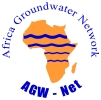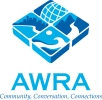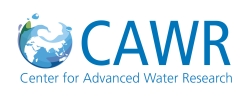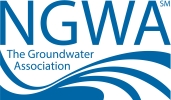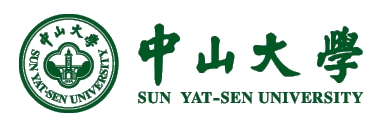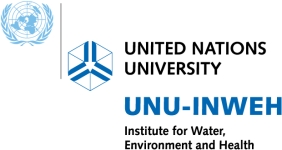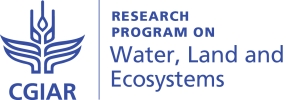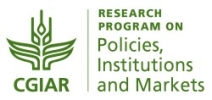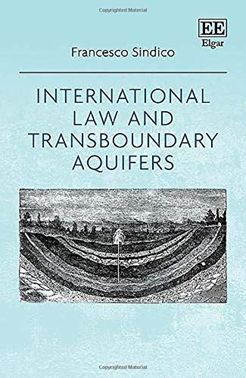
There is increasing attention in academia and elsewhere to the stewardship of Earth’s freshwater endowment, in general, and the problem of the complex legal and institutional dimension of it, in particular.
In this context, the stewardship of groundwater found in aquifers underground that are crossed by the international boundary lines of sovereign states (transboundary aquifers) is of particular contemporary importance.
Despite overextraction and a strong dependence on it, groundwater has long been overlooked by international water law, to the point that relevant rules, governance and information are in obvious demand.
In fact, at present, there is no global binding convention for the governance of transboundary groundwaters, but only a handful of agreements made in the last few years, and some case law, addressing various aspects of transboundary aquifers. Therefore, state practice in the matter is under development and evolving.
Against this backdrop, the book International Law and Transboundary Aquifers by Dr. Francesco Sindico, recently published by Edward Elgar, investigates the emerging international law, as applicable to and practiced around transboundary aquifers, and explores the links of such law to customary international law.
With uncanny ability, the author adopts a practical, hands-on approach that the reader can easily relate to, and that is predicated on a hypothetical scenario comprised of three phases.
In the first phase, states begin by characterizing the aquifer they have in common and, as a result, manifest interest in managing it jointly. In the second phase, they go on to articulate rules and practices for the management and protection of the aquifer, with a view to – in the third phase – differentiating the rules and practices that are compulsory from those that only provide guidance.
The book is divided into six chapters.
Following a short introduction illustrating the importance of groundwater and transboundary aquifers to mankind, its importance to socioeconomic development and the environment is explained in chapter 1. The second chapter explains what an aquifer is, and illustrates its various configurations in the light of the definitions featured in the United Nations Draft Articles on the Law of Transboundary Aquifers (2008).
The author also makes a brief reference to climate change, and to the United Nations Sustainable Development Goals (SDGs) of Agenda 2030, in particular, Goal 6 – clean water and sanitation for all.
In his analysis of the first phase of the hypothetical scenario, Dr. Sindico notes the scarcity of state surveys and information regarding specific transboundary aquifers, despite advances on record in relation to knowledge of these invisible resources in many parts of the world.
The third chapter provides an overview of the emerging international law of transboundary aquifers, starting with the work of the International Law Association (ILA) to the influence of the Internationally Shared Aquifer Resources Management (ISARM) initiative of the United Nations Educational, Scientific and Cultural Organization – Intergovernmental Hydrological Programme (UNESCO-IHP). The chapter concludes with the work of the United Nations International Law Commission (ILC) and other intergovernmental organizations that resulted in the few international legal instruments on record for the governance of transboundary aquifers.
These provide the rules and the practices that states can avail in the second phase of the hypothetical scenario. In particular, the analysis covers the United Nations Draft Articles on the Law of Transboundary Aquifers of 2008, United Nations Watercourses Convention (UNWC) of 1997, United Nations Economic Commission for Europe (UNECE) Water Convention of 1992, and the UNECE Model Provisions on Transboundary Groundwaters adopted in 2012.
The author notes in this connection that international law is not silent when it comes to the management of transboundary aquifers, but that a normative maze has gradually been developed by the international community in that regard.
In the fourth chapter, the normative content of the international law of transboundary aquifers is explored through an in-depth analysis, in particular, of the United Nations Draft Articles.
The substantive norms regarding the equitable and reasonable use of transboundary water and the duty not to cause harm, environmental protection norms, procedural norms concerning the exchange of information and data, monitoring, prior notification of planned measures and environmental impact assessment (EIA), and institutional arrangements are mapped out under the overarching umbrella of a duty of cooperation. The latter is on the basis of the joint mechanisms that can be tracked to bilateral and regional agreements and arrangements, all of which bear out allegiance to the principle of state sovereignty, as qualified by international law and by the United Nations Draft Articles.
The fifth chapter is dedicated to the future of the international law of transboundary aquifers in connection with customary international law. States with shared aquifers have pinned down the rules that are relevant to the governance of these aquifers, and try to make out and differentiate those that are binding from those that provide only guidance in their endeavor. This chapter makes up the third phase of the hypothetical scenario.
The answer to the issue posited here is that the Draft Articles are a non-binding instrument, but they should be used as a reference for the guidance of states when they negotiate a specific agreement or arrangement.
The author goes on to discuss the future format of the Draft Articles – an issue that is up for discussion by the United Nations in 2022 – and the likely advantages and disadvantages of a global convention.
In this connection, the author advocates improving the normative content of the draft articles, and concludes that they are here to stay in their current format, at least for the foreseeable future.
He shows that a dichotomy between hard and soft international law is embedded in the draft articles, something that is a reflection of the normativity of non-legally binding instruments.
Despite their being in the nature of soft law, the draft articles incorporate fundamental rules of state behavior that reflect customary international law, and are, therefore, legally binding on all states.
The extent to which the emerging international law of transboundary aquifers reflects customary international law is, therefore, significant insofar as the emerging law binds all states in the hypothetical scenario.
In particular, based on the analysis of the normative content of the legal instruments mentioned above, Dr. Sindico argues that few norms of the emerging international law of transboundary aquifers are ripening into customary norms.
In particular, the procedural norms seem to have attained that status, as they are reflected in a majority of agreements and arrangements, as a direct result of the gradually expanding knowledge of the aquifers.
In contrast, the international law of transboundary aquifers is still in embryo when it comes to substantive norms, as the equitable and reasonable utilization rule and the no-harm duty are absent from specific agreements and arrangements.
These substantive norms, however, must be considered together, and alongside the duty to cooperate for the adequate management of transboundary aquifers.
The last chapter addresses seven formal agreements and five informal arrangements concluded by states with shared aquifers, highlighting the difference between the two, and attributing consideration of the latter to the paucity of state practice on record.
In this connection, the author refrains from offering a clear indication as to which approach is preferable for the governance of a transboundary aquifer, as the choice will depend on the circumstances specific to the aquifer, and on the involvement of the widest spectrum of stakeholders concerned.
Lastly, the emerging ‘project’ model of cooperation in relation to transboundary aquifers, and its value as a departure point, or for the continuation, of a process of collaboration and cooperation that can result in an agreement or arrangement, and can thus contribute to the strengthening of customary international law for the governance of transboundary aquifers is explored.
In conclusion, the book provides a thorough contemporary guide, and is a valuable and useful contribution for experts, professionals and scientists who engage in the management and protection of transboundary aquifers across the globe.
Dr. Elena Quadri
Research Associate, Water Resources Research and Documentation Centre (WARREDOC), Università per Stranieri di Perugia (University for Foreigners of Perugia), Italy.
A free preview, including download of Chapter 1, of the book as well as more information can be found on the website of the publisher, Edward Elgar.
Citation:
Sindico, F. 2020. International law and transboundary aquifers. Gloucestershire, UK: Edward Elgar. 208p. https://doi.org/10.4337/9781788117630
Hard cover: ISBN 978 1 78811 762 3
eBook: ISBN 978 1 78811 762 0
Sign up for GRIPP news and updates
Sign up for the Call to Action on Global Groundwater Sustainability







